Manage templates
The templates feature has been deprecated. Migrate any usage to the Data Modeling Service (DMS).
Use templates to structure and organize data to your needs. You can assign fields to the template to which you then give values or reference other data such as time series or assets. Build your view of the data available in Cognite Data Fusion (CDF) and simplify the applications and solutions you are working on by accessing data through templates. Templates remove the gap between the application's data model and the preexisting structure of the relevant data. It's easy to scale your solution across more data without changing or redeploying your application code or configuration. Instead, you can work with your template in CDF and use the tooling available to scale to more data with governance.
-
A template group hosts your grouping of templates.
-
A template describes the structure of your data objects.
-
An instance is the actual data object.
You can, for example, create templates for pumps and valves that you use in your solution. You can further define that pumps should have inlet pressure as a property referencing a time series. The instance can, for example, be your pump_01 with the time series timeseries_inletpressure_240 as the inlet pressure.
Create template group
To create a template, you first need to create a template group where you can store it.
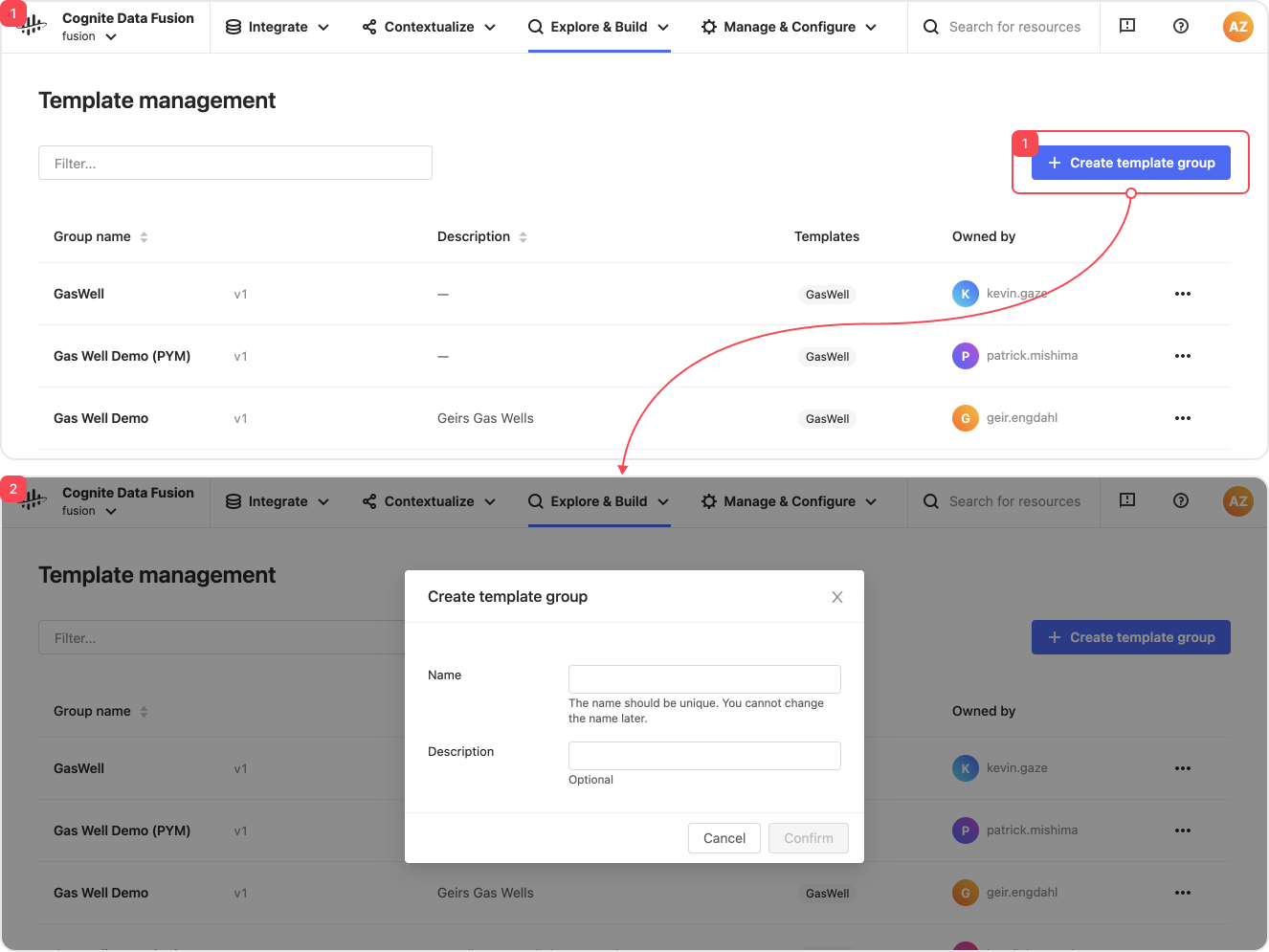
- Select Create template group (1) and give it a name and description (2). The template group will have version 1: v1
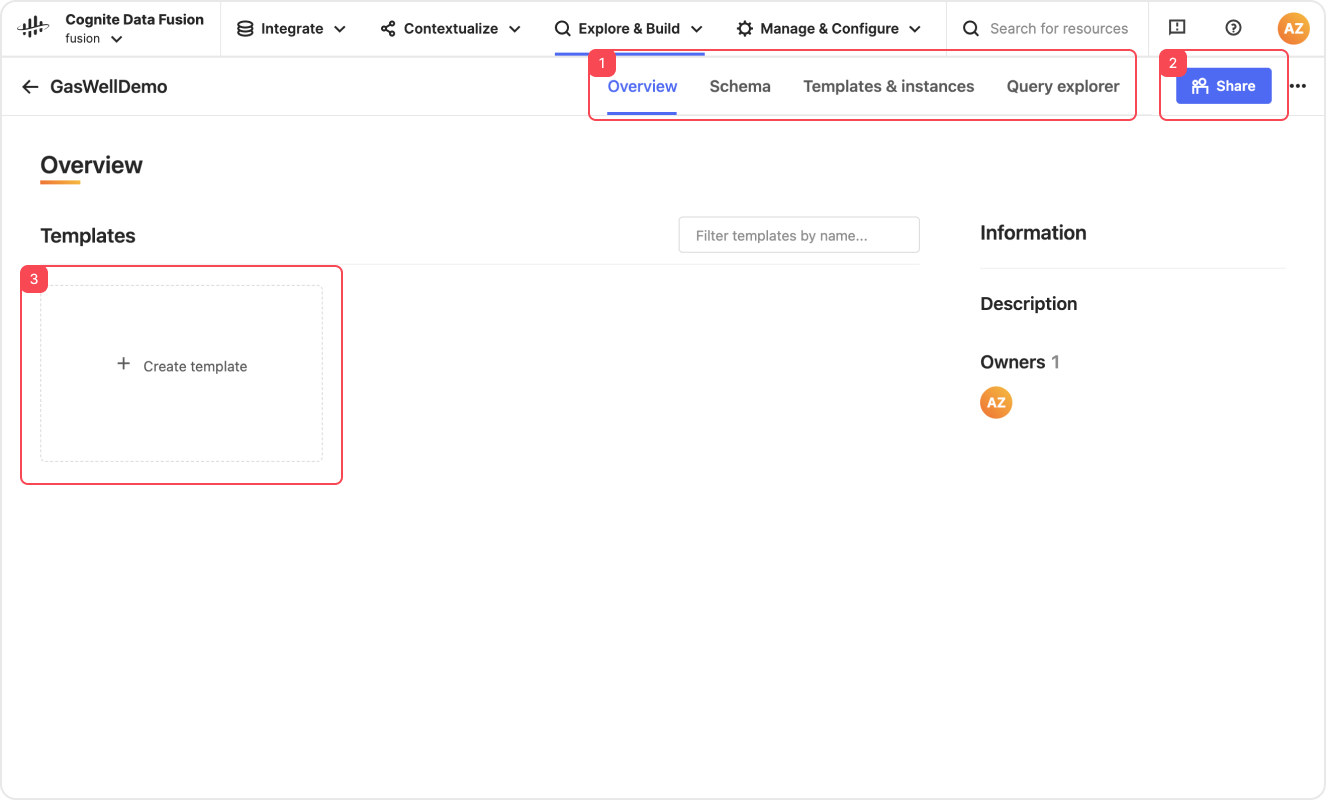
- Query the template groups using the tabs Overview, Schema, Templates & instances, and Query explorer (1).
- Use Share (2) to add users that can edit your template groups.
- Select Create template (3) to add a new template to your group.
Create template
Use templates to build the structure of your data objects.
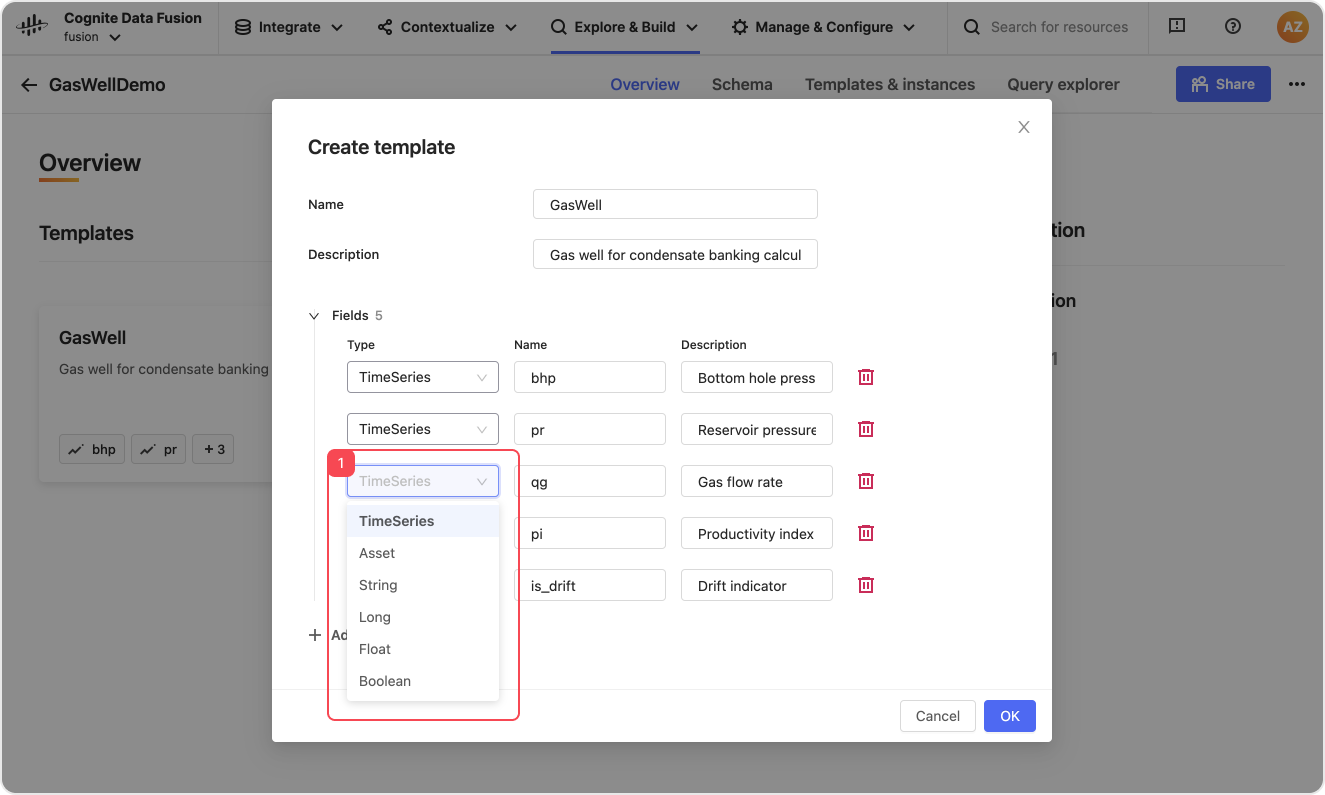
- Select Create template and give it a name and description.
- Add the fields you want to use in your template: Asset, Time series, String, Int, Float, or Boolean (1).
Populate templates
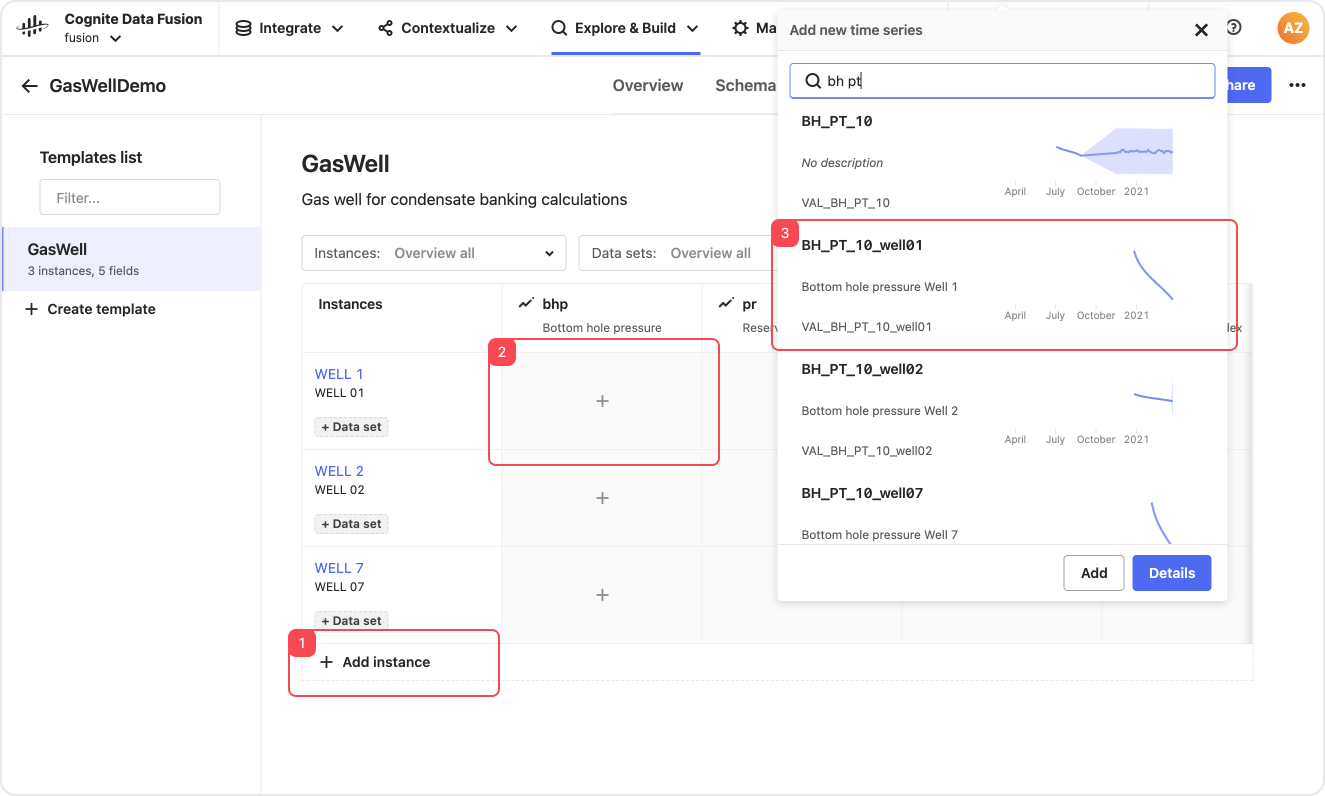
- Choose from the list of available assets to add an instance to your template (1). You can populate the rest of the fields when you've added an instance.
- Add time series (2). Choose from the list of available time series (3).
Suggestions
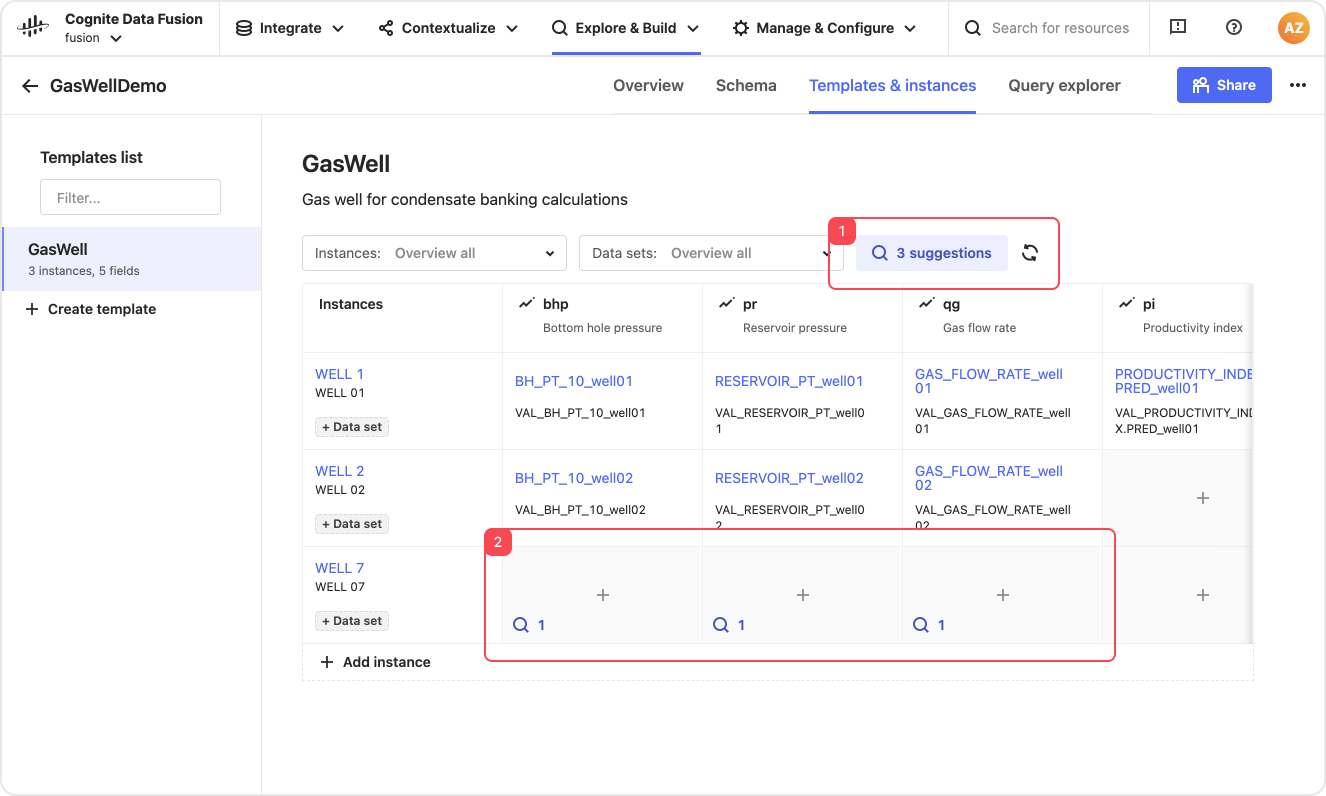
-
When you add instances and properties to your template, the suggestion algorithm learns your patterns, metadata, and the connections between the time series. The algorithm infers the time series for the other instances.
-
You can find suggested entries in an overview (1) or for each property (2).
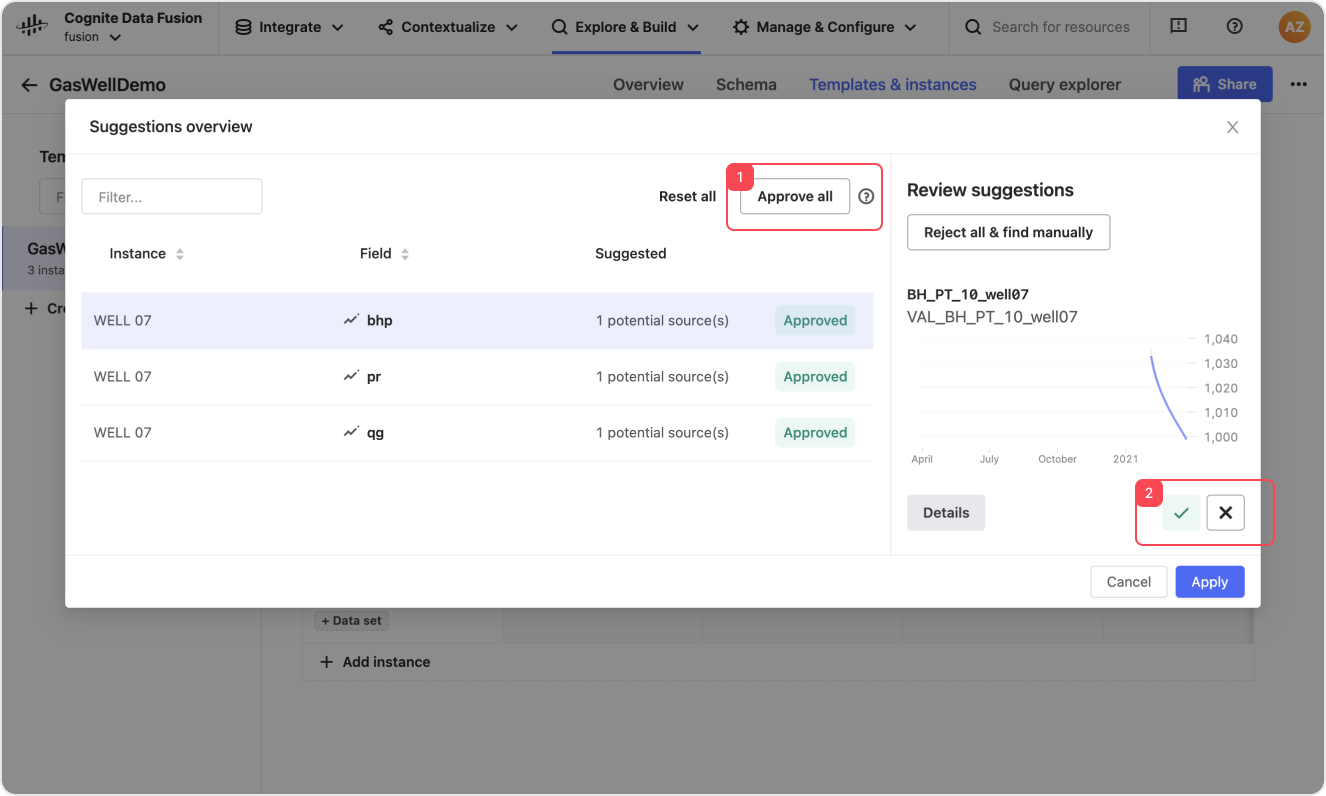
-
Review, approve, or reject the suggestions in the Suggestions overview panel as a bulk operation or individually.
-
Proceed to solve your data model.
-
Use Grafana or other tools to visualize your data.